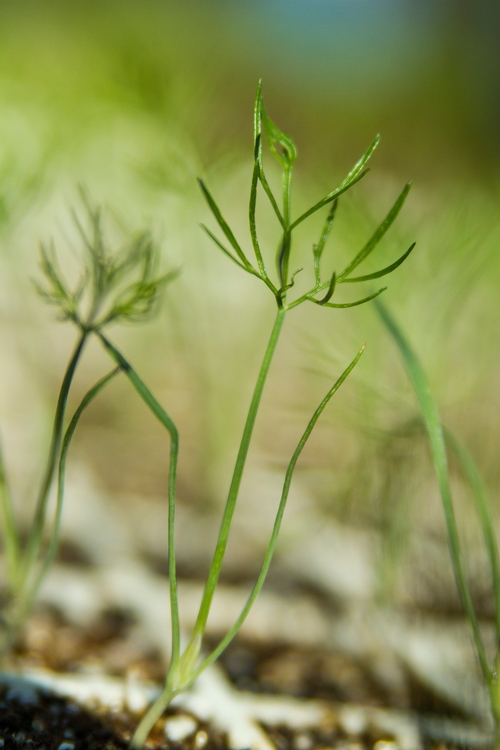Most of us have built our greenhouses to create warm places to start our seeds and grow our seedlings when the weather outside is cool. In a region that has seen snow on Memorial Day Weekend, the winter-time greenhouse is critical to establishing plants that are ready to go in the ground once the danger of frost has passed. But by July, these same structures can become oppressively hot in the heat of the day rendering them useless for plant propagation.
The vegetables and flowers that can over-winter in our region germinate, in general between 70 and 85° Fahrenheit. (There are a couple of exceptions, such as cabbage, which will germinate at temperatures as high as 95°F.) Starting these seeds in a hot greenhouse during August is a bad idea. Though some seeds may germinate, you will need to spend a lot of time watering and the risk of drying out your seedlings is very high. Check out the “Knotts Handbook for Vegetable Growers” for more information on germination temperatures and requirements (http://extension.missouri.edu/sare/documents/KnottsHandbook2012.pdf.)
A simple solution is to start your seeds outdoors. Yep, that's right- outdoors. Just move a few greenhouse benches outside (in a deer protected area) and start your seeds there. If temperatures remain in the high 90's, you may want to consider starting your fall starts in an area that receives afternoon shade. Seeds will readily germinate and seedlings will grow well adapted to the outdoor weather.
The larger the cell size, the slower the dry down. Try and use larger cells if you don't want to water multiple times a day. You will use more potting mix, but may be able to get away with one, well timed, thorough watering. If you are struggling to find time to water adequately, think about installing a simple, automated system. A battery operated, spigot timer can be purchased in most hardware stores and a “low-flow,” rotary sprinkler will emit small droplets that won't damage freshly seeded trays. Pound in a t-post and zip-tie the sprinkler to the top for a quick and dirty watering system. An online search will yield many options for a more advanced greenhouse watering system.
Another greenhouse cooling option is to place shade cloth over the plastic of your structure. Shade cloth is a knit polyethylene fabric that can be stretched over a greenhouse or hoop-house. It is reusable and available in densities from 30% shade up to 90% shade. A study by North Carolina State University showed that lower density shade cloth was as effective as higher density at keeping temperatures cooler (https://www.uvm.edu/~susagctr/resources/HighTunnels.pdf.) This is useful information considering the cost of shade cloth increases along with its density.
Whether you start your seeds in a well-ventilated, shaded greenhouse or outdoors, the main thing is to to keep temperatures and moisture levels optimal for seed germination. In the foothills, you'll want to have over-wintering plants in the ground by the end of September so if you haven't started your seeds yet, now is the time to do it!

